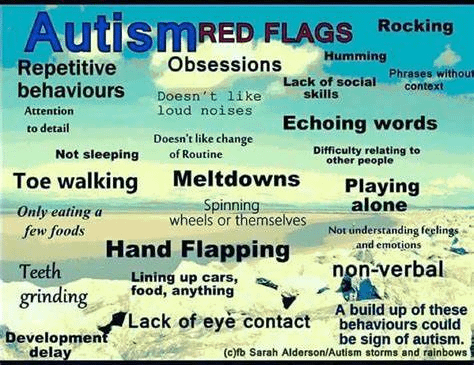
Imagine Jane, a mother, watching her son Michael at a family gathering. While other children are engaging in conversations and play, he appears to pay more attention to patterns on the carpet or toys on the shelf. It occurs to Jane that Michael hardly looks at people who are talking to him; she realizes that this is his usual behavior. When someone calls out his name or something similar, he will quickly glance but then look away just as fast. In light of such behavior, Jane has become concerned and asked for help so that she could understand why his child avoids eye contact.
Problem Characteristics
A fundamental aspect of social interaction is eye contact. For many autistic children, however, avoidance of eye contact is normative. This avoidance may take several forms:
Occasional or fleeting eye contact: The child may focus briefly on an individual before turning their attention elsewhere.
Looking at objects instead of faces: These people will be keen on a toy, article of clothing, or maybe just any spot around the wall rather than focusing on the speaker’s face.
Discomfort while making eye contact: Some children don’t like making direct eye contact and show it through some discomfort behaviors like fidgeting.
For parents and caregivers who expect to maintain eye contact during conversations as per social norms then these behaviors may sometimes be bewildering.
Why Eye Contact Avoidance in Autistic Children?

Understanding why autistic children avoid looking into other people’s eyes can help manage this behavior effectively. There are several reasons behind this:
Sensory Overload: A number of autistic individuals find it difficult to make eye contact due to sensory overload caused by visual and emotional intensity created when staring one directly into their eyes.
Social Anxiety: Looking into another person’s eyes requires complex interpretation which means responding should also involve these cues hence complicating matters for autistic kids which makes them avoid eye contact.
Neurological Differences: In autistic individuals, their brains process eye contact differently from normal people’s brains, therefore, rendering the activity less rewarding and more difficult to undertake.
Focus on Specific Interests: Attention of autistic children is often held by personal interests that may not be related to social interactions hence this results in preference for looking at objects rather than humans.
Practical Solutions with Examples
Addressing eye contact avoidance involves a combination of understanding, patience, and practical strategies. Some effective solutions are:
Gradual Exposure:
Start with short periods of eye contact during enjoyable activities. For instance, while playing a favorite game, encourage brief eye contact by holding the game pieces near your eyes.
Positive Reinforcement:
Praise and reward your child when they make eye contact. Use a favorite treat or extra playtime as a reward.
Modeling Behavior:
Demonstrate good eye contact in your interactions. Children often learn by observing. When talking to them, ensure you maintain gentle and consistent eye contact.
Use of Visual Aids:
Some children respond well to visual cues. Use pictures or videos showing characters making eye contact, explaining the importance in a simple, engaging manner.
Occupational Therapy:
Occupational therapists can work on sensory integration techniques to help children manage sensory overload and improve social skills including eye contact.
Activity and Support with Examples
A lot of fun could be had when incorporating activities that encourage eye contact. Here are a few ideas:
Interactive Games:
Play games like “Peek-a-boo” or “Simon Says”, which require children to look at instructors to know what they should do.
Storytelling:
While reading, hold the book near your face and make your child look into your eyes. Sometimes, pause and engage in your child’s gaze.
Mirror Exercises:
Stand in front of a mirror with your child and make faces. This can promote looking at faces.
Role-Playing:
Role-playing social situations using dolls or action figures that allow safe environments for showing how it may be done as well as practicing eye contact skills.
Detailed Case Study: Michael’s Journey
Michael’s journey provides a clear example of the practical implementation and impact of these strategies on avoidance of looking into eyes. Since the child was six years old, he would rarely look people in the eyes something that troubled his mother Jane who decided to consult an occupational therapist.
The psychologist began by making gradual exposure exercises where she included trains since Michael loves them most. They played a game whereby Michael was supposed to first look into the therapist’s eyes before he could get his favorite train. Finally, this boy started making some brief eye contact. Positive reinforcement using small rewards for instance getting additional playing time was also very important.
Jane also used visual aids at home, showing Michael videos of children making eye contact during conversations. Interactive games such as ‘Peek-a-boo’ became a mandatory everyday activity. Hence creating fun while learning took place. After months of practice and support on a regular basis, there was significant improvement on Michael’s comfortability level with eye contact.
Conclusion
Avoiding direct glances is a typical behavior shown by autistic individuals thereby leaving parents and caretakers puzzled due to its cause for concern nature among others . Understanding why this happens can be a first step to making significant strides. Consequently, incremental exposure; positive reinforcement, and role modeling, as well as engaging in activities, all of them can make looking into the eye better.
This is a long journey which requires patience and empathy but the resulting benefits are quite remarkable. Hence you should always strive to encourage your child gently while celebrating small progressions since it can enable them to improve their eye contacts and enhance their social relations over time with more support.












No comments yet. Be the first!